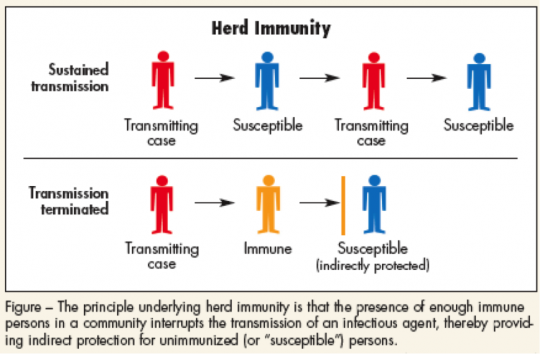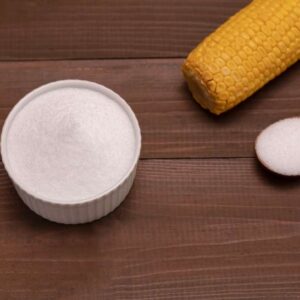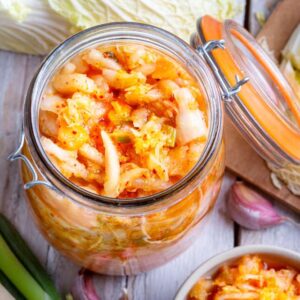
“Universal” Failure: Public Health’s Answer to Prevention
- What is herd immunity doing (or not doing) for you?
- What are Americans doing almost as much as paying taxes?
- Fever, aches, paralysis – Oh, my!
Dear reader,
Picture it.
Every staff member in the emergency room is covered head to toe in masks, gowns and gloves.
Patients spread about the ER bays — the worst cases rushed to isolation rooms.
Families, particularly those with children, told to leave for their own protection.
Medications and vaccines stockpiled in nurses stations so quickly pharmacy can’t fill the orders.
Instantly, emails fly out to all of the floors.
Administrators, VPs, infection control specialists, and department managers frantically making emergency census plans, hiring more part-time staff.
Frantically adding employees to on-call lists — preparing for the certain onslaught of sick patients and inevitable nursing staff absences.
What kind of outbreak could cause such madness?
Ebola?
Measles?
The plague?!
Nope.
As a mental health triage screener, this is the scene I observed each year since the first case of influenza rolled into the ER.
Managers instructed (bullied) their workers to take the vaccination as fast as humanly possible.
The flu shot was mandatory for anyone working in the hospital, even those not in direct patient care. If you were to decline the shot, you had to sign a form stating you chose to forego it.
This hospital, like most others, made it clear that you were not going to have an excused absence if you missed work due to contracting the flu and had declined the shot.
Every year but two, I declined.
The two years I took the shot, I lived with a family member who has a chronic illness. I never believed the shot worked, but his doctor did. While it certainly went against my principles to take the vaccine, it was what had to happen at the time.
Those two years, I got sick — something that never happened in the years I rejected the vaccine.
I experienced flu-like symptoms in the days after taking the shot — common side effect, amongst other more severe ones, we will dig deeper into a bit later.
I witnessed many co-workers and patients suffer the flu even though they had the vaccination.
First-hand evidence of how mass vaccination did not combat the spread of the influenza virus.
And what is worse, most of these folks experienced side effects and still have no immunity for at least two weeks.
I would often wonder how was this happening if all those folks got the flu shot? Why did I keep hearing “herd immunity”? What does the medical establishment actually know about this virus? What is in this vaccine?
Should I risk my current good health on a vaccine that may harm me more than help me?
Flu Shot Frenzy — “Protecting” the Herd
These days, you can’t hide from the flu shot. Advertisements are at every turn. Blurbs on the television, radio, billboards, and buses — the constant reminders that we all need the shot or risk being one of the estimated 3,000 – 49,000 flu-related deaths.1
The shot is available everywhere. Once only found at medical facilities, you can now find it in pharmacies, schools, big-box stores, grocers, and drive-thrus — even in airports. What’s next? Your first bag flies free when you take the flu shot?
Over 500 infectious diseases affect humans, but U.S. public health officials recommend vaccination for just 17 of them. Of these 17, only is “universal” (recommended for all): the flu shot 2.
As of 2010, the Advisory Committee on Immunizations Practices (ACIP) recommends all persons over 6 month of age get the flu shot — a knee-jerk response to the 2009 H1NI flu pandemic which caused 151,700 – 575,400 deaths worldwide 3. Hmmm… a 400,000 range in a death estimate. What are a few hundred thousand lives to a public health authority?
In fact, the University of Minnesota’s Center for Infectious Disease Research and Policy completed the Comprehensive Influenza Vaccine Initiative (a comprehensive study of flu shot data) and had this to say about the ACIP’s recommendation:
“In an effort to reduce influenza morbidity and mortality, over the last three decades the ACIP has expanded the populations recommended to receive influenza vaccine. These recommendations, however, often were based on professional judgement and not on scientifically sound data.”
So what is the benefit of immunizing a majority of the population?
Allegedly, it creates herd immunity.
Herd immunity is a popular concept public health agencies use to sway people into vaccinations. The herd immunity principle claims an entire population experiences more protection by partial immunization of a population than none at all.
Vaccines.gov describes herd immunity as:
“When a critical portion of a community is immunized against a contagious disease, most members of the community are protected against that disease because there is little opportunity for an outbreak. Even those who are not eligible for certain vaccines — such as infants, pregnant women, or immunocompromised individuals — get some protection because the spread of contagious disease is contained 4.”
Translation: Group protection at the cost of individual health.
While there is some controversy on the efficacy of herd immunity and not a whole lot of science to back it, this diagram shows how it should work.

Diagram from www.pediatricsconsultantlive.com
But does this work if the vaccine is only 19 percent effective?
That’s right…
The 2014 flu vaccine at greatest estimate was 19 percent effective.5
Meaning getting the vaccine reduced one’s of chances contracting the flu by a meager 19 percent and leaves an 81 percent chance of getting it.
Lots of losers in that herd — unless you are Big Pharma.
The flu virus strains used for the inoculation were a bad match for the active virus
Basically, the creators of the vaccine put all of their chips on the wrong strain.
So why all of the panic and vaccine pushing if it’s only going to leave a gaping 81 percent hole in the herd?
Money, duh.
Low Protection, High Profits
2013 yielded $3.1 billion in flu shot sales for Big Pharma. 6
Many have said this figure is small in comparison to other drugs Big Pharma pushes. But that’s like saying one bank robbery is smaller than another.
How many businesses are going to turn away their cut of a $3.1 billion profit?
Not to mention their buddies over at the CDC do a great job of convincing most people they need this vaccine to be safe from the flu. And the FDA assures it’s totally safe.
Their friends at retail pharmacies are in on the campaign as well.
Walgreens’ January 2013 sales jumped 6 percent thanks to pharmacists being able to give the shot.
Prices for a single flu shot at Walgreens vary from $31.99 – 59.99 but that’s not the only big motivation for drug stores. If they can get customers in for vaccinations, chances are they can get you purchase household items and groceries, thus increasing their profits even more.
All told, 47.1 percent of Americans took last season’s almost worthless vaccine.7
That’s over 150 million people.
That seems like a lot.
It is.
To put this in perspective, roughly 166 million Americans pay taxes.8
Almost as many people are willing to get the shot as they are to shell out a penny to Uncle Sam.
Surely there are large profits for companies selling and distributing a product purchased by almost half of the country.
And what exactly are they selling us?
More Than Just a Dead Virus
Most flu vaccinations contain viruses cultured in eggs. Though, there is an alternative vaccine available for those who have poultry allergies.
The shots contains either three or four different strains of the virus depending the type of shot.
But the ingredients don’t stop with dead viruses and eggs.
There are toxic inactive ingredients in the vaccines as well.
Vaccine-makers use formaldehyde in vaccines to inactivate the virus strains. Per the International Agency for Research on Cancer, formaldehyde is a human carcinogen.10 Who wants to inject themselves with a carcinogen?
And the dangers don’t stop there.
Another inactive ingredient is octylphenol ethoxylate, a product used in paints. It’s very toxic to aquatic wildlife and likely disrupts hormone functions in animals.
There are few studies about its exact effects on humans. Logic would say if it’s bad for animals, it’s probably bad for humans. 11
But wait, there’s more…
Multidose vials of the flu shot contain mercury.
Thimerosal is a preservative in the multi-dose vials of the flu immunization and is about 50 percent mercury by weight.
As of 2002, thimerosal is no longer in childhood vaccines thanks to a joint effort by the CDC, FDA, NIH, Health Resources and Services Administration HRSA and the American Academy of Pediatrics.
These agencies urged vaccine-makers to remove the mercury-based product “just in case” there was a link to autism.12
Why allow it in any vaccine, then? Particularly the only “universal” vaccine.
What kind of side effects could these toxic ingredients cause in our bodies?
The truth is, we don’t know a whole lot. I was unable to find any studies on the combined inactive ingredients – this further complicates understanding the full range of negative health endpoints.
And, wait a minute… there hasn’t been one person in my life, close, distant or even a patient — who has died from the flu…
Vaccination Considerations
The vast range of 3,000-49,000 estimated annual deaths from seasonal flu is interesting. The CDC allows for such a range due to the inaccuracy in the reporting of deaths from seasonal flu and death certificates rarely listing the flu as cause of death.
If it’s so dangerous, why don’t they make hospitals report it? Reporting is required for many diseases including rabies and chickenpox.
It is factual the flu virus can aggravate certain chronic diseases such as chronic pulmonary disease and cardiovascular disease but rarely is the flu the single cause of death.
These massive ranges allow for the CDC to use big, scary numbers that are mostly inaccurate. However, they do provide encouraging data for the flu shot campaign.
Common side effects listed for the flu shot include soreness, redness and swelling at the shot site; low- grade fever; and aches. While it won’t give you the flu, it can certainly make you feel rotten for a few days.
Dr. Wayne Gorsek of Dr. Vita had this to say about the flu shot’s effects on the body:
“The latest studies I’ve seen on the flu shot show it does not work and it actually increases your risk of getting the flu because what it does is it weakens your immune system. It actually causes your immune system to go after the alleged invaders in that flu shot and you’ve got a certain amount of fire power. Just like a gun only has a certain amount of ammo. And when you use up that ammo, you don’t have anything to use against the real invader.”
He went on to add, “I do not get flu shots, I don’t give them to my children and no way, no how.”
But that is not the worst that can happen.
Guillain- Barre syndrome is a disorder that causes the immune system to attack the body’s nerve cells. These attacks can cause muscle weakness and even paralysis. In 1976, cases of Guillain-Barre were associated with the swine flu vaccine.
While it is not completely clear if current vaccination have the same correlation, there were a total of 128 cases filed in vaccine court between November 2013 and February 2014. Of these, 52 received compensation and 40 arranged settlements.14 These are just the reported cases. It would be to reason there are many more out there.
And what is more disappointing — the shot is not effective for up to two weeks. Meaning you could still contract the flu virus, especially if there is an outbreak in your community.
Doing the math here makes the flu shot seem like an irrelevant precaution. Likely low efficacy after a two-week waiting period with the possibility of illness or strange neurological syndromes. Why even bother?
The lacking science about its efficacy, its toxic ingredients and the horrifying side effect seem to make it a no-brainer — don’t take it.
But making the choice to get the flu shot can be very personal matter.
The little gray areas in life can make a decision like this a little trickier. If you are in a situation, as I was, where another person’s health or beliefs are involved in your choice, be sure to take time and evaluate the pros and cons — both for your health and theirs.
If you choose the shot or not, be sure to take care of yourself during flu season. Rest, hydrate, eat well and boost your immune system naturally. If you know there is an outbreak in your community, stay home as much as you can.
A healthy immune system is your best defense!
Live well,

Natalie Moore
Managing editor, Living Well Daily
P.S. Try this easy recipe to keep your immune health in check!
Immune Boosting Cocktail
1 Teaspoon apple cider vinegar
1 cup holy basil tea
1 lemon slice
1 pinch grated ginger
½ teaspoon raw honey or to taste
Steep holy basil tea for 10 minutes. Add in ACV and honey, stir. Then, garnish with lemon and grated ginger.
This tea cocktail is perfect for first thing in the morning to get your immune system working and also a good as an immune restorative before bed.
P.P.S. Write in with any question or comments about your flu experiences or with any subjects you would like to see in future articles! nmoore@lfb.org
Citations
[1] Key Facts About Seasonal Flu Vaccine
[2] The Compelling Need For Game-Changing Influenza Vaccines
[3] First Global Estimates of 2009 H1N1 Pandemic Mortality Released by CDC-Led Collaboration
[4] Community Immunity (“Herd Immunity”)
[5] CDC Presents Updated Estimates of Flu Vaccine Effectiveness for the 2014-2015 Season
[6] Quadrivalents Boost Flu Vaccine Sales
[7] Flu Vaccination Coverage, United States, 2014-15 Influenza Season
[8] In 2015, 45 Percent Of Americans Will Pay No Federal Income Taxes
[9] Highlights of Prescribing Information
[10] National Cancer Institute
[11] National Biomonitoring Program
[13] Report from the
Department of Justice
Written By Natalie Moore
Natalie Moore is a dedicated health researcher with a passion for finding healthy, natural, and science-based solutions. After a decade of direct healthcare experience in western and natural medicine, she was involved in public health research before joining Living Well Daily.
View More Free Articles
Stop Obsessing Over Diet Trends
Can we stop with the endless diet debates already? Every other week there’s a new headline shouting about which diet is best for weight loss, heart health, or diabetes. Paleo, keto, low-carb, high-protein… it’s exhausting. And now, a new meta-analysis is out comparing the Mediterranean diet, the DASH diet, and something called AHEI (that’s “Alternative...
A New Reason to Ditch Processed Junk
If you’ve ever walked the inside aisles of your local grocery store and thought, “This is all just junk,” your instincts were spot on. A new study published in the journal Thorax just added another red flag to the list of dangers linked to ultra-processed food—a 41 percent higher risk of lung cancer. That’s right....
When Being Winded on Stairs Is Serious (And When It Isn’t)
I had an athlete visit me recently because he experienced shortness of breath while climbing stairs. He is in great shape, so he was worried about what it might mean. “Doc,” he said, “I run five miles three times a week. Why am I huffing and puffing after two flights of stairs?” His concern is...
Study EXPOSES Hidden Danger Lurking in Your Car
We think of our homes and cars as safe havens. But according to a startling new study, they may be flooding your lungs with microscopic plastic particles—every single day. Researchers in France recently found that adults inhale an average of 68,000 microplastic particles daily from indoor air alone. To put that in perspective, that’s about...
Mailbag: Is Modern Food Making You Snore?
“What can cause snoring, and is there a way to correct this issue?” —Seeking Silence Hi Seeking, Snoring happens when the soft tissues in your throat relax and vibrate as air passes through during sleep. While several factors can cause snoring—from sleep position to nasal congestion—I want to share one trigger that might surprise you....
Simple Food Swap SLASHES Dementia Risk 28%
Let’s be honest… who would jump at the chance to cut their dementia risk by 28 percent. And no, you don’t need to run marathons, survive on broccoli, or learn to play the zither (whatever that is) to make it happen. All it takes is one easy swap—something that’s probably already in your refrigerator. Researchers...
This SMART Floss Exposes Hidden Health Danger
Scientists have created dental floss that doesn’t just clean between your teeth—it also tracks your stress while you’re flossing. Now, I know what you’re thinking… “Great—now even flossing is going to stress me out by telling me how stressed I am.” But this fascinating new tool from Tufts University could be a game-changer for understanding...
Is This "Safe" Sweetener Damaging Your Brain?
The headlines are alarming… “Popular Sugar Substitute Linked to Brain Cell Damage” and “Erythritol Could Damage Critical Brain Barrier” are just two of the dozens I’ve spotted recently. But before you toss every sugar-free product in your pantry, let’s take a closer look at what this study actually shows—and what it doesn’t. The latest research...
This Summer Threat Could SPIKE Your Blood Sugar
Picture this… It’s another scorching hot summer day. You crank up the air conditioning while watching the weather forecast, which predicts yet another “record-breaking” heat wave. It’s starting to feel like just another miserably uncomfortable summer. But what you might not realize is that—if you have diabetes—those rising temps could do far more damage to...
Move Over Yogurt—5 Foods That Pack MORE Probiotics
Let’s talk about your gut. The microbiome is the collection of trillions of bacteria and other tiny organisms that live in and on your body—especially in your gut—and help keep you healthy. I’ve written often about how vital it is to maintain a healthy microbiome. And you might have dutifully added yogurt to your shopping...









